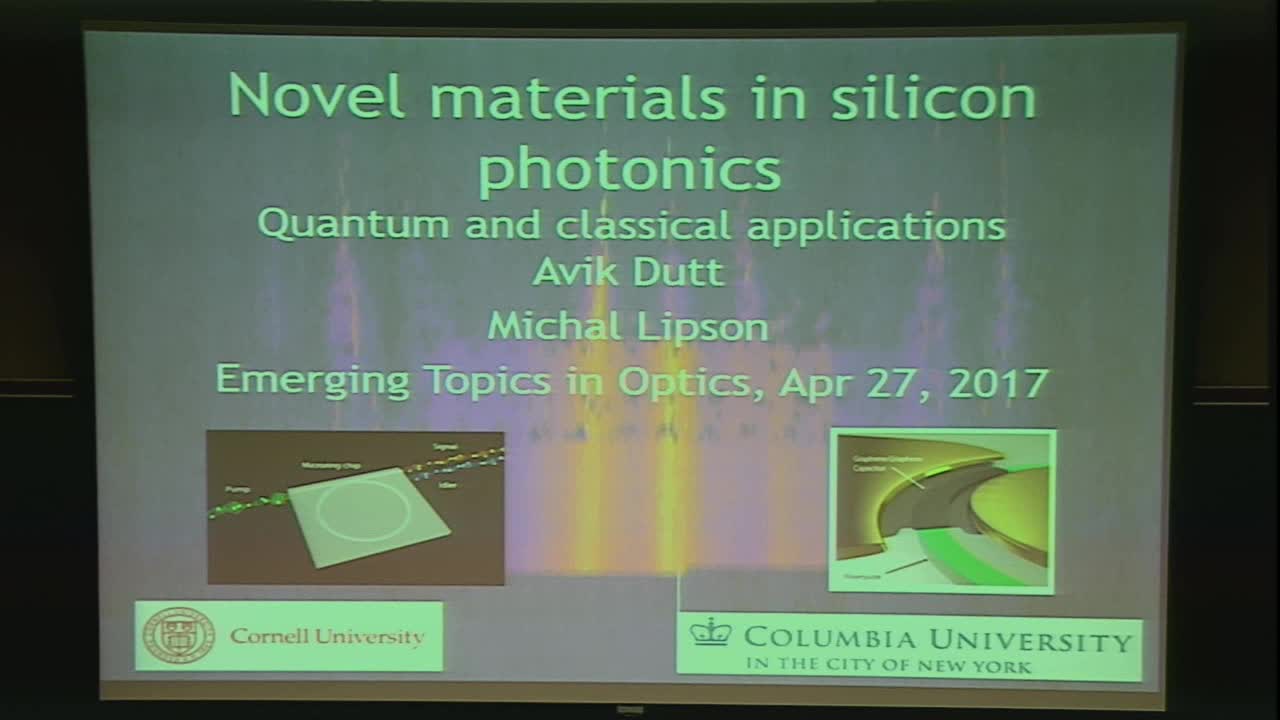Novel materials in silicon photonics: Quantum and classical applications
Presenter
April 27, 2017
Keywords:
- graphene, silicon nitride, quantum optics
Abstract
Novel materials such as silicon nitride and graphene can be integrated within the framework of silicon photonics to demonstrate interesting phenomena in the quantum as well as classical realms, and consequently enable new applications.
First, I will explain how advances in fabrication technologies have made it possible to achieve ultra-low loss on platforms compatible with CMOS technologies, such as silicon nitride. This allows us to generate nonclassical states of light on a photonic chip [Phys Rev Applied 3, 044005 (2015)], to demonstrate high-visibility quantum interference between waveguide modes [Nat. Communications 8, 14010 (2017)], and shows promise for continuous variable quantum entanglement. The low-loss silicon nitride resonators also enable breakthroughs in classical technologies such as broadband dual frequency comb spectroscopy on extremely fast timescales.
Next, I will show how we can integrate new materials such as graphene with passive non-electro-optic substrates (silicon nitride) [Nat. Photonics 9, 511–514 (2015)], to produce extremely high-speed 30 GHz modulators. The high speed of graphene-based devices offers possibilities for novel photonic phenomena, e.g. non-reciprocal light propagation through dynamic modulation [Nat. Photonics 8, 701 (2014)].
